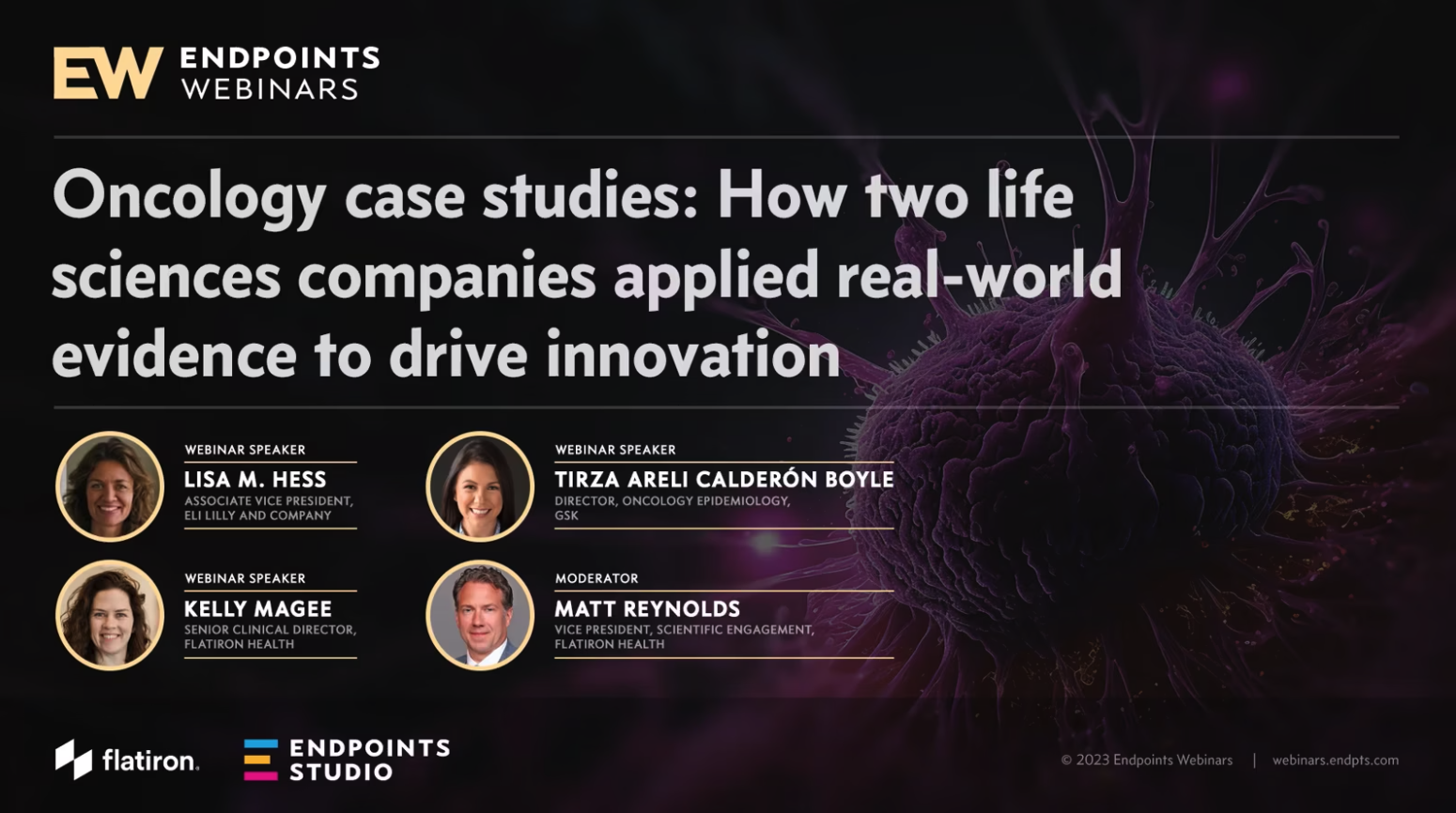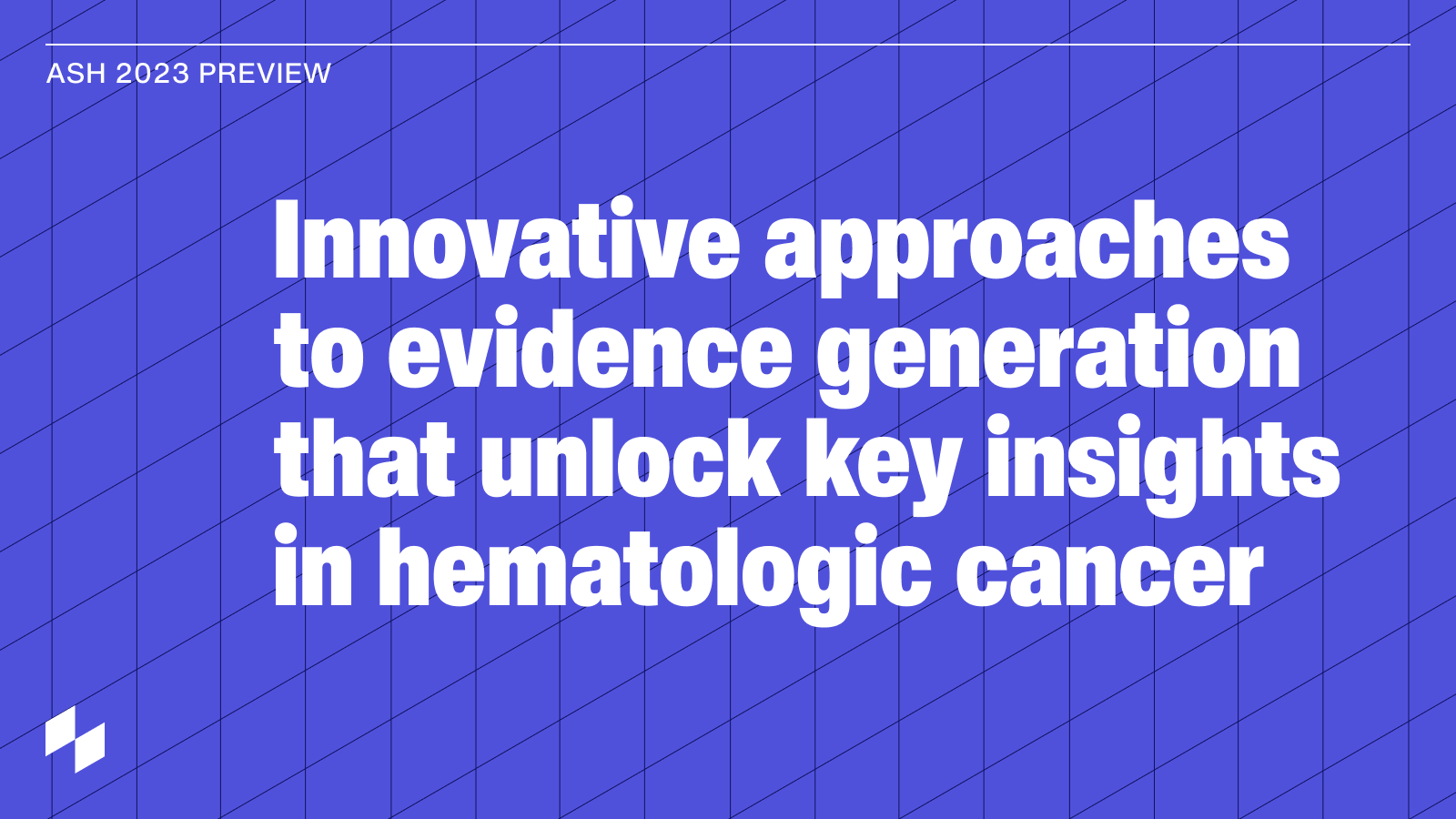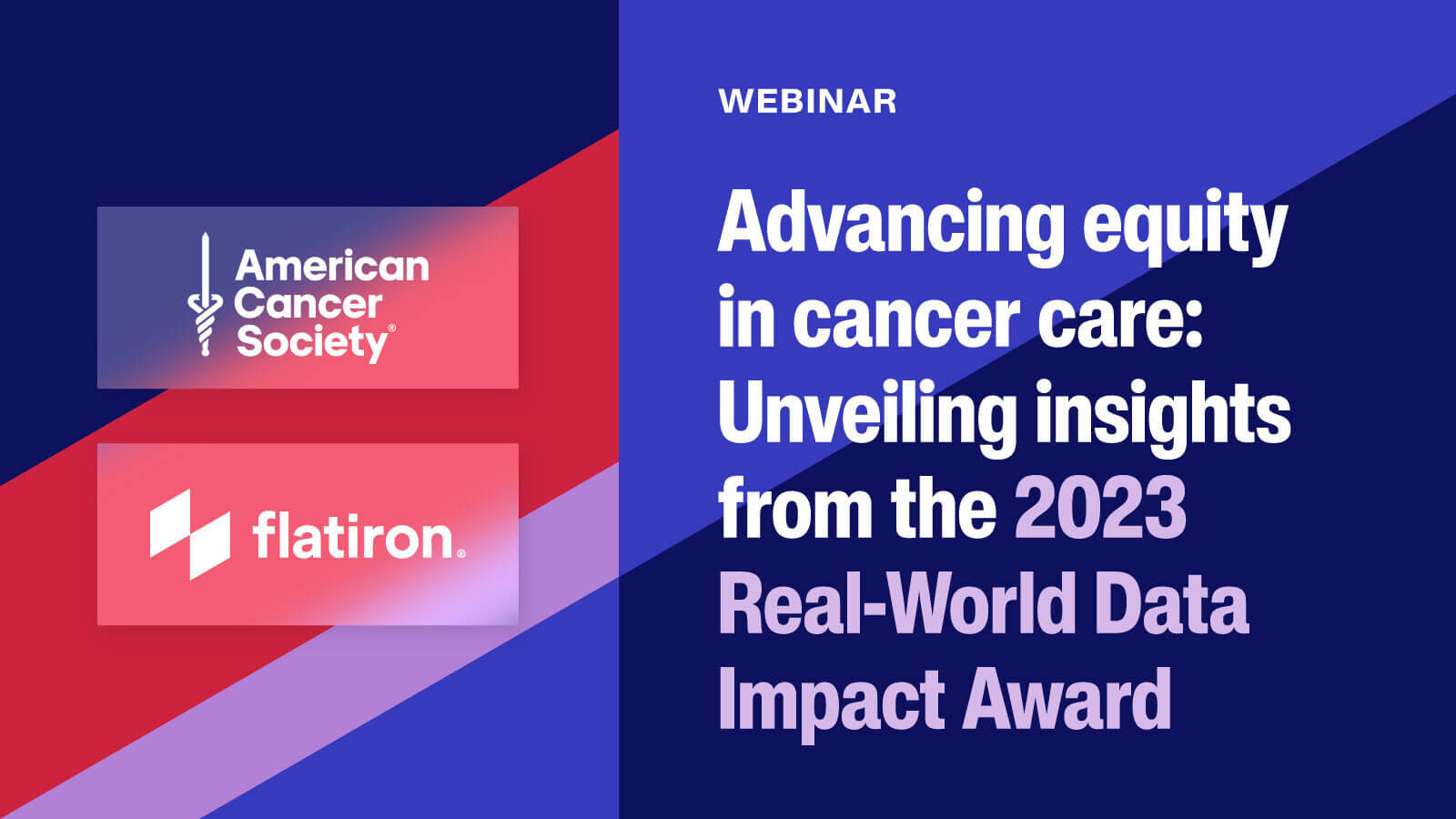This talk is part of the ResearchX session: Applying RWE to Regulatory Applications.
Sections include:
- Integrating Clinical & Genomics Real World Data to Support New Drug Application
- Postmarket Real World Data Perspectives: IBRANCE (palbociclib) Males Case
- Kadcyla (T-DM1) in HER2+ mBC Label Update on LVEF following a post approval commitment – based on RWD
- Getting Real: Real World Evidence in Oncology Drug Approval

Transcript
Albert L. Kraus: Thank you, Jillian, and good morning everyone at least in the US. Good afternoon if you're coming from Europe or happy evening in Asia. Next slide. Yeah, I'm going to just spend a few minutes high-level overview of some work we did using real-world data and real-world evidence in the case of palbociclib in breast cancer. Next slide.
Just disclosures, I am a Pfizer employee. Obviously then own stock and options in Pfizer, and these views are my own and not necessarily those of the Pfizer corporation. Next slide. So, a little background on breast cancer in men. It's a rare disease, just over 2,600 new cases in 2019, about 500 deaths, but it's a dire disease. It's an incurable disease, dismal five-year survival rate of about 16% likely because men don't expect to get breast cancer, and so probably diagnosis is occurring a little later and the disease has progressed. But for knowledge of it being a disease that's not fully data found, but it's everybody's best guess.
Importantly in male patients with breast cancer, the tumors themselves express hormone receptors and have a biological similarity to the actual tumors in breast cancer in women. And so, that becomes an important element to this real-world assessment. Indeed because of that and some other factors, the US National Comprehensive Cancer Network, NCCN, guidelines indicate male patients with metastatic breast cancer should receive similar treatment as postmenopausal women with breast cancer. Next slide.
As well, just to indicate in the background, palbociclib, which is a CDK4 inhibitor, it's a cell cycle arrest kind of activity, is approved based on the back of multiple randomized trials with very substantial hazard ratios in big treatment in fact for the treatment of women who have hormone receptor-positive/HER2- breast cancer. And as well was incorporated into practice for men, which is why we could obtain some real-world data despite it not being approved in men. We hadn't done the trials including men. They were done in women. Due to the rarity of the disease in men, it's also not feasible to conduct a traditional large adequately powered randomized trial. Next.
Important, I think, thing about real-world evidence especially in these early days if you will in registration use is the fit of the evidence into the totality of evidence. In this case, the biology of breast cancer in men and women seems similar based on a lot of background cellular/molecular information. Clinical information in this class as well generally supports similar treatment effects and palbociclib itself as I mentioned has a large and consistent treatment effect. And I mentioned the other factors here. Next slide.
As well, I would say we did work before we went into this, for this as well as for other efforts in real-world evidence looking at the endpoint derivation in the real world because real-world assessment of both response and progression is different than in trials. In trials, we use RECIST. In the real world, docs are assessing tumor response on radiology, but not in the same manner as RECIST. And tumor progression itself again is assessed a little bit different in the clinic.
So, we went and did a little bit of work, and this is in women actually, but to look at the relation of progression outcome, response outcome in real-world versus in the trials, and we found a pretty substantial consistency, and this was presented at San Antonio in 2017. That formed a backbone of some confidence to look at real-world data. At least we felt the endpoints were reasonable based on this work. Next slide. The work in palbociclib in males itself was to evaluate real-world treatment patterns including clinical activity and safety to look at what we could learn in the benefit and risks of men with hormone receptor-positive/HER2- breast cancer. Next slide.
We used three real-world data sources. I like to call it in a way triangulating against the truth because the precision may be less in the real world. Although, two of these are more effective in the space than one safety. But we used, for looking at tumor response, electronic health records using the Flatiron health system. In the second source, we looked at pharmacy and medical claims databases using IQVIA data in large part to look at duration of therapy and prescription writing. And then the third safety database was using the Pfizer global ARGUS safety database to make sure we had a beat on safety in males, that we did have some male data from other development work. Next slide.
I won't get into all the elements here, but this needless to say, in a rare disease you start with a fair number of patients treated. We had predefined protocols as Kiran went through, and predefined assessment plans. And so, we have a number of detailed inclusion criteria to try to get the right patients. Then we have to make sure they were treated with palbociclib. There's some level of disease assessment that's adequate. A response assessment, progression assessment. We want to make sure they also received antihormonal agents in this case aromatase inhibitors or fulvestrant.
And then it narrows down to relatively small numbers in a rare disease in this case, and we'll get into this a little closer. But a little bigger numbers in prescription deliverables, smaller numbers in response assessment. Next slide. So, just to briefly give you a highlight on some of the data. This was duration of therapy. As you can see in the Kaplan-Meier group here, the duration of treatment and the blue line above is palbociclib plus letrozole in the frontline setting. It was longer than letrozole alone, about three times as long. Almost looking at that as a time to treatment failure kind of assessment. As well in the second line, which is not shown here or further than second line, palbociclib plus fulvestrant seemed to deliver a longer duration of therapy than fulvestrant alone. Next slide. When we look at the Flatiron Health response data, the real-world response data, which was partial plus complete response as defined, not in a RECIST sort of manner, we had four responses out of 12 patients. When we looked at endocrine-only, we had one response out of eight patients. Knowing this was in a confined duration of time assessed so that the patient assessments would be done in a similar temporal environment.
We wanted to get a little more data on endocrine-only in males, and so we went to a different timeframe and picked up 16 patients with adequate data, et cetera, and two of those 16 have responded. So, suggesting a similar in that range of one out of eight for background therapy, whereas we had four out of 12 for the palbociclib. Next slide. Safety, bottom line here, just for the sake of time, we looked at some specific prespecified AEs in the Flatiron EHRs. We also scoured the Pfizer global safety database and we didn't see anything that looked different than the toxicity profile seen in women. Next slide.
FDA elements here. We did have multiple meetings with FDA, and I would encourage engagement and discussion with FDA on any proposals on several real-world designs, including these aspects that I'm presenting here on males. But there were other efforts and a lot of discussion input. There was a thorough review by FDA with a lot of questions and queries on all sorts of elements, data elements, interpretation elements, et cetera. And multiple site inspections for the work, both at Pfizer where we did the data crunching if you will, and stat analyses. But at Flatiron as well with the EHR and IQVIA with their aspects. Obviously, the inspections went well. No 483's issued. Next slide.
Some specific inclusions to this aspect is we felt real-world data sources supported that men with metastatic breast cancer appeared to drive some benefit from addition of palbociclib endocrine therapy. Safety profiles seemed consistent. So, we felt it was useful information. There are a number of limitations of these retrospective analyses in the small data set for sure. Kiran went through a number of them. I could go on about them too. There are limitations to anything we do, of course, but in these small data sets, even more in retrospective adds.
But we did submit this to FDA overall with the breadth of information that we previously obtained, and we were able to get an expanded indication including men into the label. And so, we think this is exciting new way, in this case, to slightly expand the label based on the strong evidence that's really this substantial evidence from the randomized trials in women. Next slide.
So, this just shows some changes in the USPI. We moved from being approved in women to adult patients, postmenopausal women, or men, talking about patients. We also had a section on a dosing schedule. I won't get into it here, but we got some fairly controversial information on use of LHRH agonist in men. You use those in women in certain instances, and it's recommended to be used in men, but there wasn't good compliance with use. And NCCN recommends they are used, and yet they're not in the real world that much. So, it was interesting. We put some languaging around there to hopefully help guide use a little better.
And then there is a statement around the safety of real-world evidence showing consistency with that seen in women. Next slide. I think this is the last one mostly. So, I think the key considerations too, we have to find fit for purpose examples of use of real-world evidence, and really tie it to the totality of all the evidence that we see on the drug. Non-clinical, clinical, and in this case, the fact that a randomized trial was not feasible also helped it. Next slide. And so, that's it. That's all I have. Thank you very much for your attention, and I'll turn it back to Jillian.


